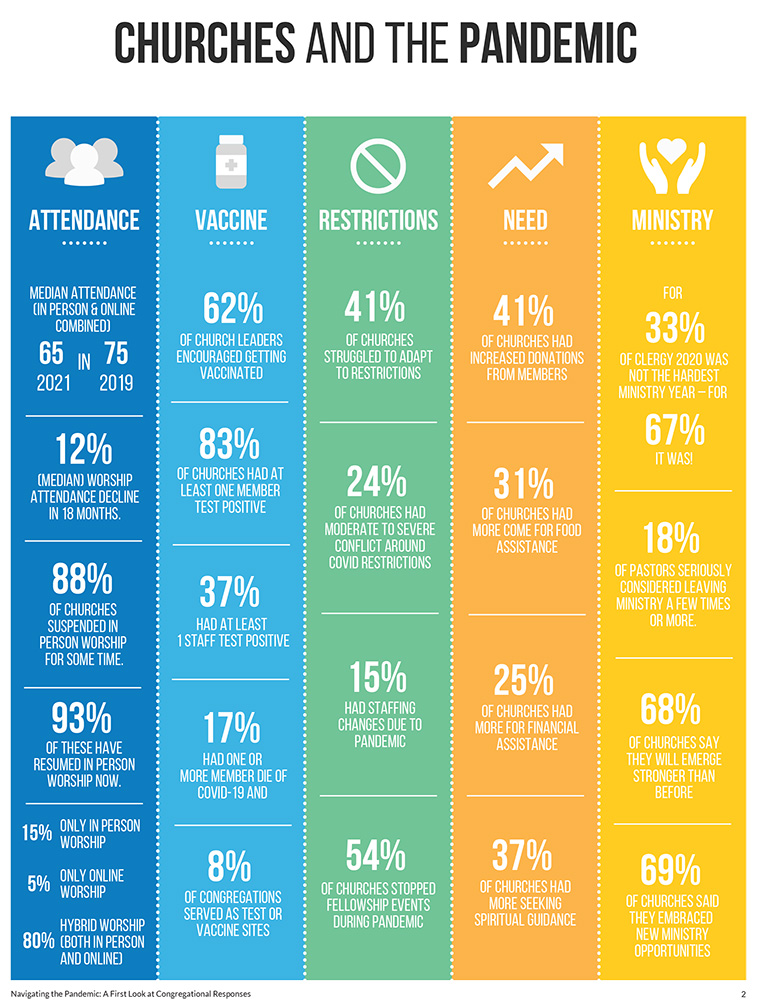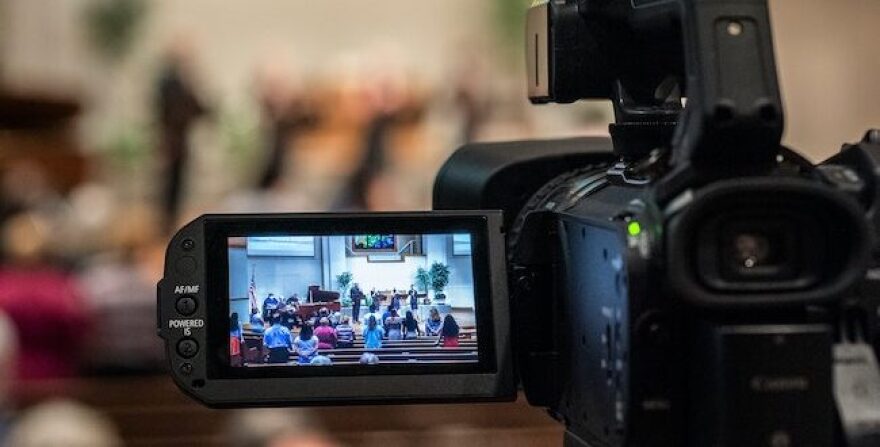A report released this week from the Hartford Institute for Religion Research shows hybrid worship is the new norm for U.S. churches — at least for now.
The study, Exploring the Pandemic Impact on Congregations: Innovation Amidst and Beyond Covid-19, shows 80% of congregations are offering both in-person and online services.
Colville United Church of Christ is one of them.
The Rev. Jim CastroLang said his church put Covid protocols in place and began offering an in-person worship option earlier this year.
“We’re a small church, we figured we could do it safely,” he said, noting about 20 people worship at Colville UCC.
CastroLang said in-person worship was growing, until the Delta variant began to spread, then most moved back to tuning in via Zoom. Now, though, he said more are returning to the pews.
He said his sanctuary was already well-equipped for hybrid worship, since it has a large screen hanging in front. This way, he says, the Zoom attendees and the in-person worshipers can see each other.
He added that the church has also found ways to invite participation from the Zoom attendees.
Other UCC churches in the state, in more populous areas, continue to only offer virtual worship.
St. John’s Cathedral is another area church offering hybrid services.
“Over these months, we have had people share how much they have appreciated the livestreamed worship services. This includes congregants who are ‘homebound’ and had not been inside the Cathedral for worship in a few years – the livestream video has helped them feel as if they are inside the Cathedral at worship and brought them closer to God,” said Rev. Heather VanDeventer, dean of the Cathedral.
Though some have expressed that online church doesn’t “feel real,” others have joined St. John’s virtually and have become members of the parish, she said.
“So sharing worship online has been a wonderful tool for evangelism and congregational growth, as well as a needed method of worship and pastoral care outreach,” she said.
For in-person worship, she added video cameras haven’t been a distraction and worship leaders have found ways to include both online and in-person worshipers. St. John plans to continue live streaming worship, “for the foreseable future,” VanDeventer said.
The Exploring the Pandemic Impact on Congregations report, however, shows that although most U.S. churches are opting for hybrid worship, 15% of churches across the country are worshiping solely in-person.
The report includes 2,074 survey responses from 38 Christian denominational groups from mid-June to the end of August 2021.
In addition to worship trends, the report also studied community service activities, which remained a thriving ministry for most churches and continued to be offered in person. Over 30% of congregations saw the need for food assistance, counseling and spiritual demands grow over the course of the pandemic. Many congregations (41%) also saw their giving increase to help meet this growing demand.
“These findings from the summer clearly show that the pandemic has had a profound impact across the religious spectrum, and that some churches are faring better than others,” said Principal Investigator Scott Thumma. “The fact that 83% of churches had at least one member test positive shows that almost no congregation was spared, but over two-thirds feel they will emerge stronger than before implies these faith communities are a resilient bunch.”
This report is the first wave of a collaborative, five-year research project funded by Lilly Endowment Inc.

*Editor’s Note: Tracy Simmons is a consultant on the Exploring the Pandemic Impact on Congregations project.


